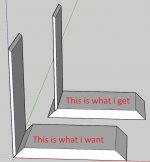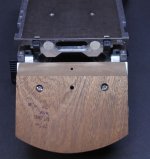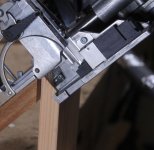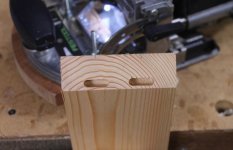I want to create a mitre joint between two boards that are different thicknesses. I want the outside of the mitre to be aligned, and not the inside.
To mitre with the Domino normally, I would lie the boards in a trapezoid shape, where the top is shorter than the bottom as the two sides are mitred 45 degrees. Then set the domino to 45 degrees, and use in the inside face (the shorter) face of the board as a reference for the height of the domino cut. But because this is referencing off the inside face, if I do this using boards of different thicknesses, the mitre joint will be perfect on the inside, and not on the outside.
Is there a way I can reference the outside face of the boards, so that the mitre is aligned on the outside of the joint?
Not sure i've explained it well - so i've included a picture.
To mitre with the Domino normally, I would lie the boards in a trapezoid shape, where the top is shorter than the bottom as the two sides are mitred 45 degrees. Then set the domino to 45 degrees, and use in the inside face (the shorter) face of the board as a reference for the height of the domino cut. But because this is referencing off the inside face, if I do this using boards of different thicknesses, the mitre joint will be perfect on the inside, and not on the outside.
Is there a way I can reference the outside face of the boards, so that the mitre is aligned on the outside of the joint?
Not sure i've explained it well - so i've included a picture.




